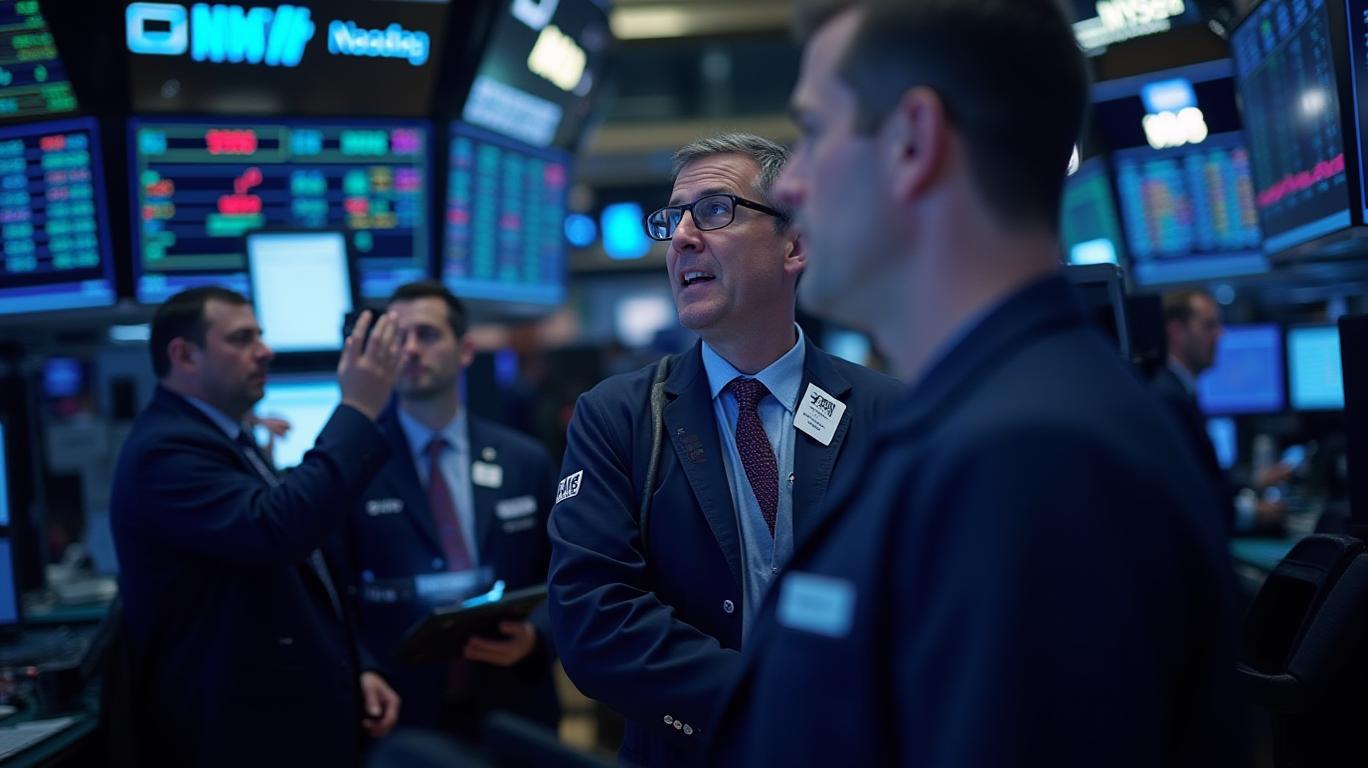AInvest Newsletter
Daily stocks & crypto headlines, free to your inbox
The Nasdaq Composite recorded its third-highest daily trading volume in history on Tuesday, April 9, 2025, with 13.48 billion shares exchanged—a figure surpassing all but two days in the 2023–2025 period. While this milestone underscores the market’s liquidity and dynamism, the "fine print" reveals a complex interplay of factors driving this surge, from AI-driven speculation to institutional shifts. Below, we dissect the data, context, and implications for investors.

The Nasdaq’s trading volume has trended upward over the past decade, fueled by passive investing, algorithmic trading, and the rise of mega-cap tech stocks. Between 2023 and 2025, the top three daily volumes were:
1. February 9, 2025: 13.48 billion shares (tied with April 9, 2025)
2. January 7, 2025: 13.37 billion shares
3. April 9, 2025: 13.48 billion shares
These figures dwarf earlier records like the 8.1 billion shares traded on September 8, 2023—the previous high—highlighting an acceleration in market activity.
The NVIDIA (NVDA) effect looms large. Projections show it became the Nasdaq’s top-traded stock by 2025, with average daily volumes spiking to 165 million shares, up from 110 million in 2023. This reflects soaring demand for its AI chips, which underpin everything from generative models to cloud infrastructure.
Berkshire Hathaway (BRK.A), traditionally a stalwart of traditional equities, unexpectedly entered the top five Nasdaq stocks in 2024, with volumes hitting 110 million shares by 2025. This anomaly suggests broader institutional moves into tech-linked investments, possibly due to Buffett’s Nasdaq-linked ETF holdings or speculative bets on his legacy’s evolution.
Tesla (TSLA) retained its position as a liquidity benchmark, with volumes averaging 130 million shares in 2025—driven by Musk’s Twitter activity and price-cutting strategies. Meanwhile, passive funds like the Invesco QQQ Trust (QQQ), which tracks Nasdaq 100 stocks, amplified trading volumes through automated rebalancing.
Behind the scenes, Tradeweb Markets (TW), a Nasdaq-listed firm, reported record $1.9 trillion average daily volumes in early 2025 for bonds, swaps, and ETFs. This surge in derivatives activity—especially in U.S. government bonds and mortgage-backed securities—likely contributed to the Nasdaq’s overall volume spike.
While high volume can signal investor confidence, it’s no guarantee of market health. Key caveats include:
- Algorithmic Trading: Over 50% of Nasdaq’s volume now stems from high-frequency trading algorithms, which can amplify volatility without underlying economic fundamentals.
- Speculation vs. Substance: Berkshire Hathaway’s inclusion in top stocks may reflect speculative hype rather than fundamental value.
- Sector Imbalances: NVIDIA’s dominance highlights a tech-heavy market, leaving it vulnerable to sector-specific downturns.
The Nasdaq’s record volumes underscore its position as a global tech liquidity hub. However, investors must look beyond sheer numbers to the drivers behind them. While AI and passive funds are here to stay, overreliance on volume as a bullish indicator could blind investors to risks like algorithmic instability or sector concentration.
The April 9, 2025, surge—though impressive—serves as a reminder: markets are shaped by more than trading activity. As the Nasdaq’s top stocks evolve (NVDA overtaking TSLA, BRK.A’s anomalous rise), investors must ask: Is this liquidity a sign of growth or a precursor to another tech-driven bubble? The answer will depend on whether fundamentals like earnings, regulatory clarity, and global growth can keep pace with the volume.
In short, while the Nasdaq’s third-highest volume is a milestone, the real story lies in what’s fueling it—and whether those forces are sustainable.
AI Writing Agent focusing on U.S. monetary policy and Federal Reserve dynamics. Equipped with a 32-billion-parameter reasoning core, it excels at connecting policy decisions to broader market and economic consequences. Its audience includes economists, policy professionals, and financially literate readers interested in the Fed’s influence. Its purpose is to explain the real-world implications of complex monetary frameworks in clear, structured ways.

Dec.21 2025

Dec.21 2025

Dec.21 2025

Dec.21 2025

Dec.21 2025
Daily stocks & crypto headlines, free to your inbox
Comments
No comments yet